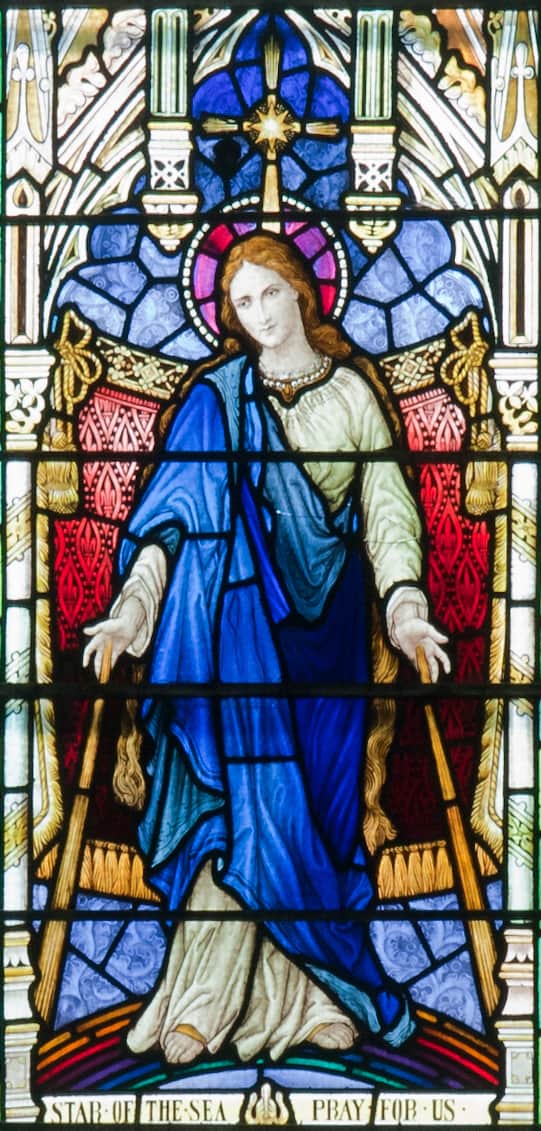At the end of the daily Liturgy of the Hours, among the invocations addressed to Mary by the Church is the following:

“Loving Mother of the Redeemer, gate of heaven, star of the sea,
assist your people who have fallen yet strive to rise again.
To the wonderment of nature you bore your Creator!”
“To the wonderment of nature”! These words of the antiphon express that wonderment of faith which accompanies the mystery of Mary’s divine motherhood. In a sense, it does so in the heart of the whole of creation, and, directly, in the heart of the whole People of God, in the heart of the Church. How wonderfully far God has gone, the Creator and Lord of all things, in the “revelation of himself” to man!147 How clearly he has bridged all the spaces of that infinite “distance” which separates the Creator from the creature! If in himself he remains ineffable and unsearchable, still more ineffable and unsearchable is he in the reality of the Incarnation of the Word, who became man through the Virgin of Nazareth.
If he has eternally willed to call man to share in the divine nature (cf. 2 Pt. 1:4), it can be said that he has matched the “divinization” of man to humanity’s historical conditions, so that even after sin he is ready to restore at a great price the eternal plan of his love through the “humanization” of his Son, who is of the same being as himself. The whole of creation, and more directly man himself, cannot fail to be amazed at this gift in which he has become a sharer, in the Holy Spirit: “God so loved the world that he gave his only Son” (Jn. 3:16).
At the center of this mystery, in the midst of this wonderment of faith, stands Mary. As the loving Mother of the Redeemer, she was the first to experience it: “To the wonderment of nature you bore your Creator”!
52. The words of this liturgical antiphon also express the truth of the “great transformation” which the mystery of the Incarnation establishes for man. It is a transformation which belongs to his entire history, from that beginning which is revealed to us in the first chapters of Genesis until the final end, in the perspective of the end of the world, of which Jesus has revealed to us “neither the day nor the hour” (Mt. 25:13). It is an unending and continuous transformation between falling and rising again, between the man of sin and the man of grace and justice. The Advent liturgy in particular is at the very heart of this transformation and captures its unceasing “here and now” when it exclaims: “Assist your people who have fallen yet strive to rise again”!
These words apply to every individual, every community, to nations and peoples, and to the generations and epochs of human history, to our own epoch, to these years of the Millennium which is drawing to a close: “Assist, yes assist, your people who have fallen”!
This is the invocation addressed to Mary, the “loving Mother of the Redeemer,” the invocation addressed to Christ, who through Mary entered human history. Year alter year the antiphon rises to Mary, evoking that moment which saw the accomplishment of this essential historical transformation, which irreversibly continues: the transformation from “falling” to “rising.”
Mankind has made wonderful discoveries and achieved extraordinary results in the fields of science and technology. It has made great advances along the path of progress and civilization, and in recent times one could say that it has succeeded in speeding up the pace of history. But the fundamental transformation, the one which can be called “original,” constantly accompanies man’s journey, and through all the events of history accompanies each and every individual. It is the transformation from “falling” to “rising,” from death to life. It is also a constant challenge to people’s consciences, a challenge to man’s whole historical awareness: the challenge to follow the path of “not falling” in ways that are ever old and ever new, and of “rising again” if a fall has occurred.
As she goes forward with the whole of humanity towards the frontier between the two Millennia, the Church, for her part, with the whole community of believers and in union with all men and women of good will, takes up the great challenge contained in these words of the Marian antiphon: “the people who have fallen yet strive to rise again,” and she addresses both the Redeemer and his Mother with the plea: “Assist us.” For, as this prayer attests, the Church sees the Blessed Mother of God in the saving mystery of Christ and in her own mystery. She sees Mary deeply rooted in humanity’s history, in man’s eternal vocation according to the providential plan which God has made for him from eternity She sees Mary maternally present and sharing in the many complicated problems which today beset the lives of individuals, families and nations; she sees her helping the Christian people in the constant struggle between good and evil, to ensure that it “does not fall,” or, if it has fallen, that it “rises again.”
I hope with all my heart that the reflections contained in the present Encyclical will also serve to renew this vision in the hearts of all believers.
As Bishop of Rome, I send to all those to whom these thoughts are addressed the kiss of peace, my greeting and my blessing in our Lord Jesus Christ. Amen.
Given in Rome, at Saint Peter’s, on March 25, the Solemnity of the Annunciation of the Lord, in the year 1987, the ninth of my Pontificate.
John Paul II, Pope
Enciclica Redemptoris Matter
